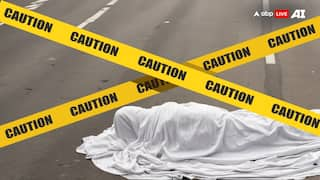Evidence Of Forgotten Roman Emperor Emerges From Coins Once Believed Fake
The coins were unearthed from the Transylvania region of Romania in 1713, some of them bearing the portrait of a Roman ruler called ”Sponsian”.

Thought to be fakes for more than a century, a set of gold coins may indeed be genuine, according to a new study published in PLOS One. In the process, the coins also provided evidence about the identity of a Roman ruler, about whom no other records exist today.
The coins were unearthed from the Transylvania region of Romania in 1713, some of them bearing the portrait of a Roman ruler called ”Sponsian”. Since it was common for ancient Roman mints to create coins bearing the portraits of current rulers, the coins were initially taken to be genuine. But in the middle of the 19th century, they were dismissed as fake because of their appearance.
Sponsian would have been in power around the 260s CE, according to the findings.
The study was conducted by scientists at University College London. They examined one of the coins bearing Sponsian’s portrait, now housed at the Hunterian Museum in Glasgow, and compared it with other Roman coins from the museum. Among these other coins, at least two are known to be genuine. The scientists studied the coins’ surfaces using powerful microscopes in visible and ultraviolet light, scanning electron microscopy, and spectroscopy.
On the coin bearing Sponsian’s face, the scientists found minerals that suggested it was indeed buried for a long time after being exposed to air. Again, a pattern of wear and tear suggested that the coin had changed hands many times; in other words, it was likely used for buying and selling.
“Our evidence suggests he (Sponsian) ruled Roman Dacia, an isolated gold mining outpost, at a time when the empire was beset by civil wars and the borderlands were overrun by plundering invaders,” a statement from UCL quoted lead author Paul N Pearson as saying.
Dacia was a Roman province that overlapped with what is Romania today. Known for gold mines, the area is known to have been cut off from the rest of the Roman empire in around 260 CE.
The scientists suggested that Sponsian may have been a local army officer who was forced to become the ruler during that period of war.
Of the coins that were unearthed in 1713, only four with Sponsian’s portrait survive today, including the one at Hunterian. One of them is in Brukenthal National Museum in Romania. After the research on the coin at the Hunterian, microscopic analysis was also done on the Brikenthal coin. It has revealed similar evidence of authenticity, according to the UCL statement.







































